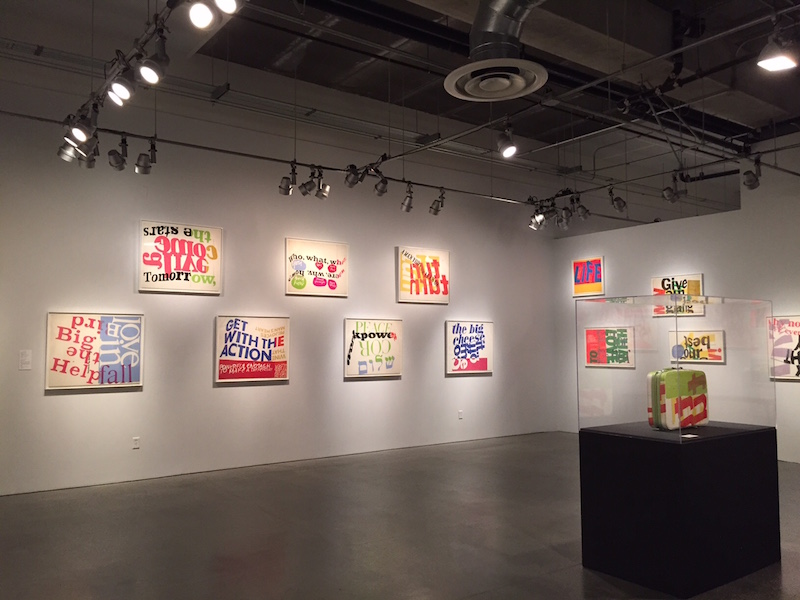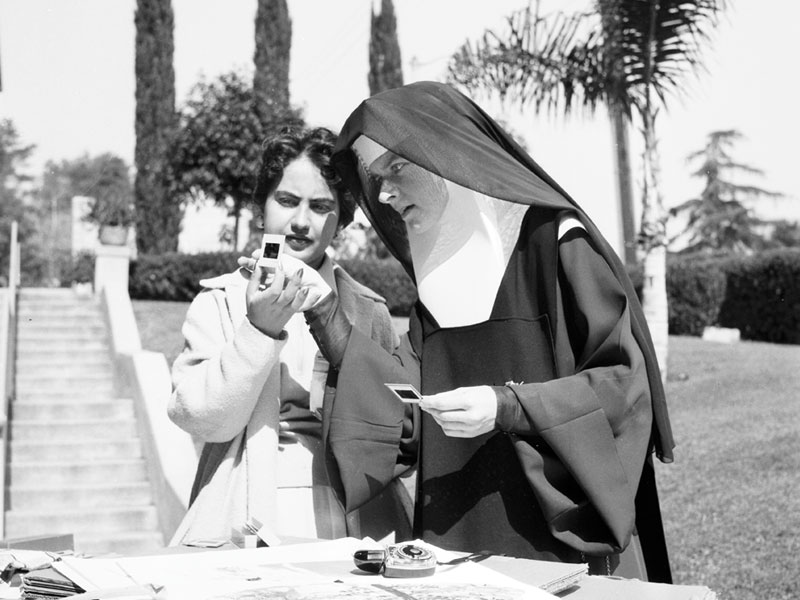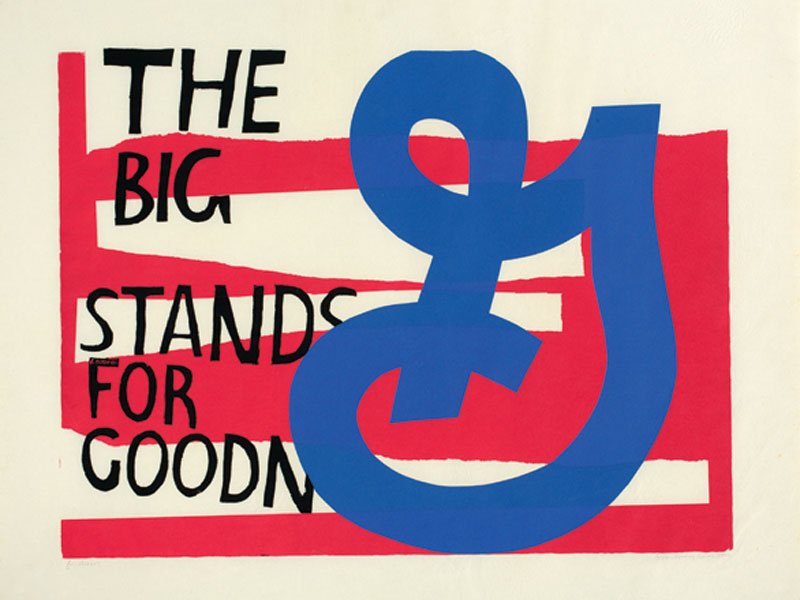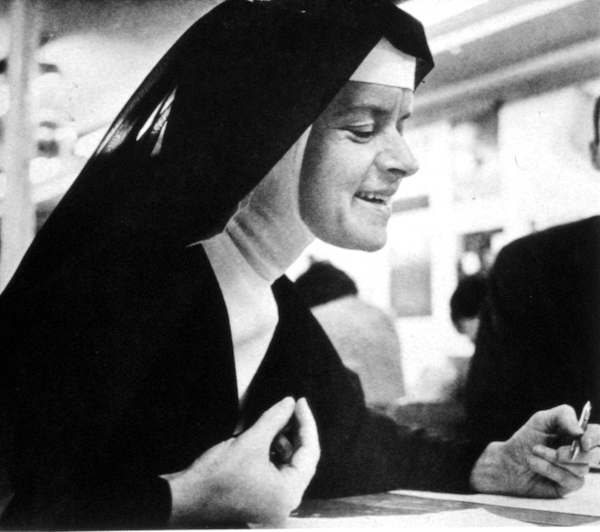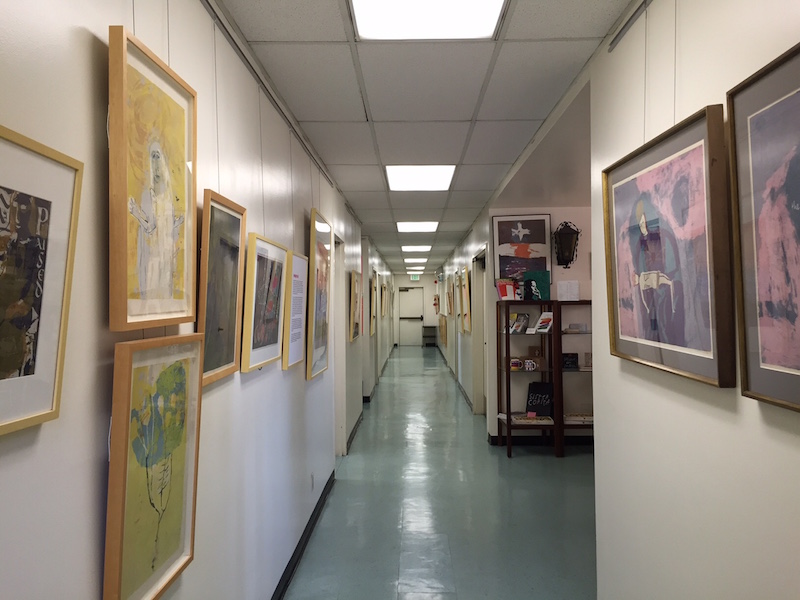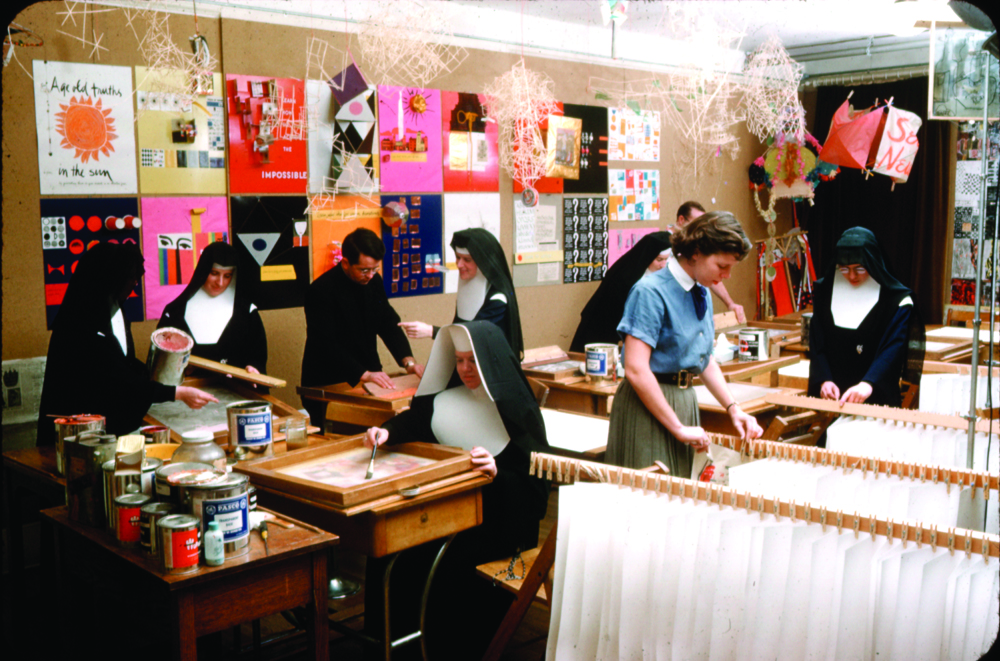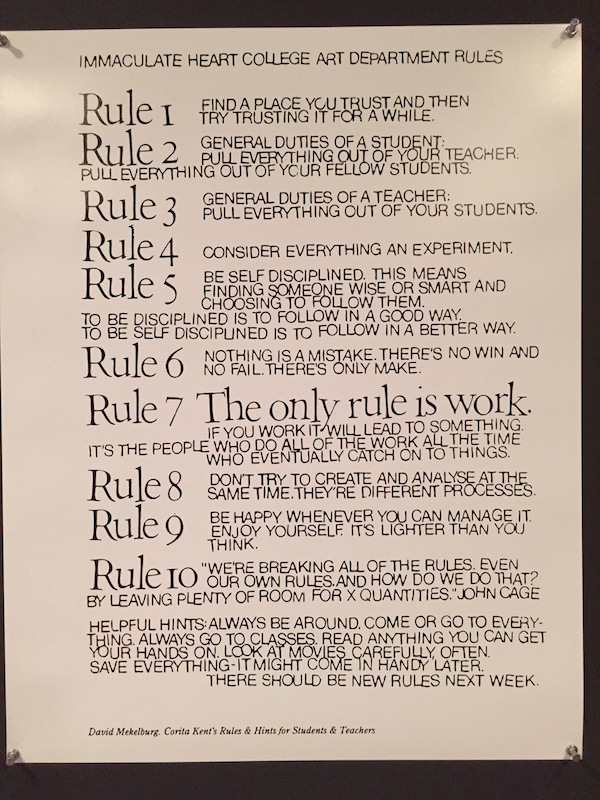Her art is in major museum collections across the country, including the Metropolitan Museum and Museum of Modern Art in New York and the Los Angeles County Museum of Art. She was one of the most popular graphic artists of the 1960s and 70s, with work appearing on billboards, book jackets, posters, gift cards, T-shirts, and even a popular 1985 LOVE postage stamp. Yet Corita Kent (1918–1986) is hardly a household name.
Kent—who was raised, educated, and became a teacher here in Los Angeles—was a Sister of the Immaculate Heart of Mary who taught in the art department at Immaculate Heart College (IHC) in Los Angeles from 1946–68. There she developed a style of printmaking that would come to characterize her socially charged works: bold, bright imagery combined with provocative texts that referenced a range of cultural sources, including advertising slogans, scripture, store signage, and poetry.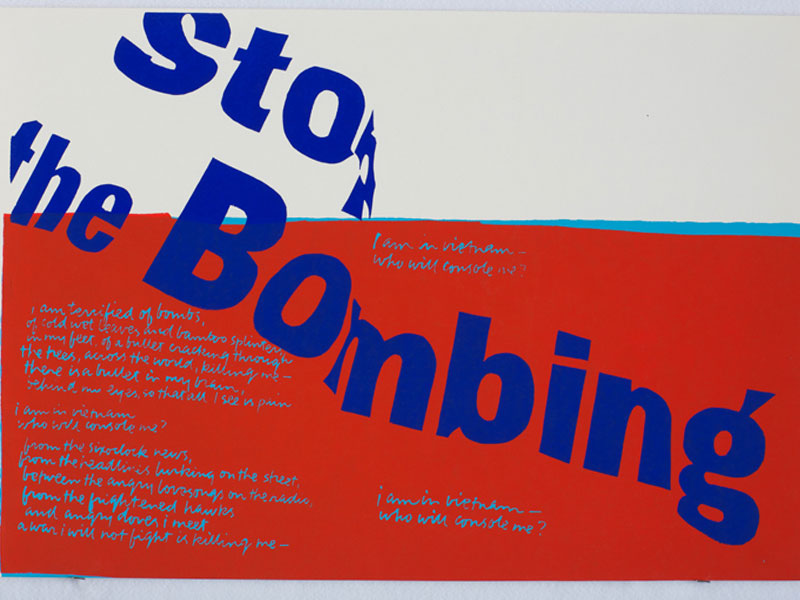
With a newly opened retrospective of her work at the Pasadena Museum of California Art and the ability to visit her namesake center in Hollywood, now is a great time to examine the life and work of this influential and inspirational California artist.
Someday is Now: The Art of Corita Kent
Now through November 1, the Pasadena Museum of California Art (PMCA) is presenting the travelling exhibition Someday is Now: The Art of Corita Kent. This is the first full-scale survey of Kent’s career, and includes nearly two hundred objects of art and ephemera.
The spacious galleries at the PMCA are lined with Kent’s lively prints. Bursts of text and color punctuate the white walls, inscribed with messages of love and acceptance. The exhibition is arranged chronologically, and begins with the artist’s early abstractions. She is best known for her later prints from the 60s, for which she extracted phrases, logos, taglines, and fonts from popular sources like grocery store advertising and song lyrics and cropped, reversed, fragmented, and rotated the texts, creating inspirational-yet-clever works that communicated the zeitgeist of the era.
Indeed, these wonderful prints, including some that are political calls to action, derive their power from their unlikely mix of faith and contemporary culture. Kent ingeniously reclaimed the vernacular of consumer culture and used its powerful media to send an altogether different message of hope and love. Someday is Now also includes Kent’s more expressive prints from the 70s and 80s, some with elegant passages of Rilke poetry or scripture, as well as rarely shown photographs of the artist at work.
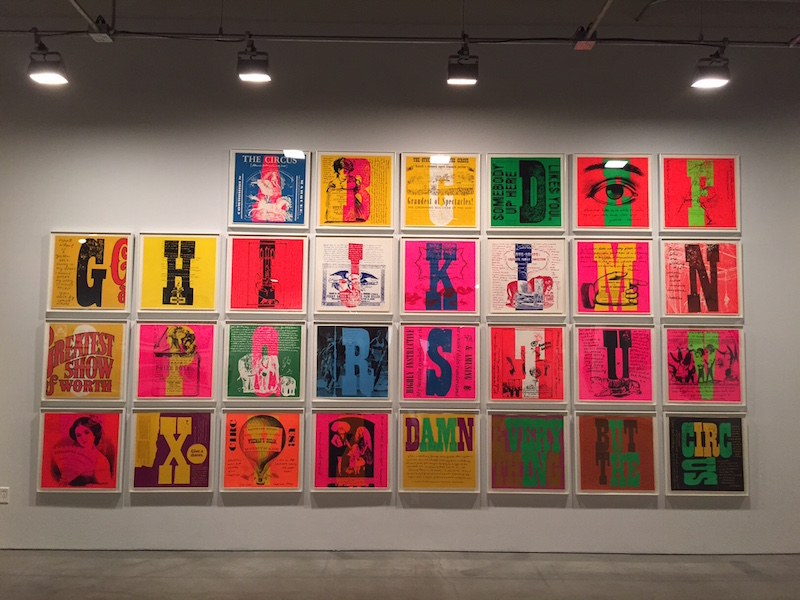
The far wall of the exhibition is dominated by two outstanding alphabets. The Circus Alphabet is a series of twenty-six vibrant and whimsical screen prints created in 1968 after a visit to the Ringling Circus Museum in Florida. Adjacent to it is another alphabet created that same year, the Signal Code Alphabet, inspired by the worldwide system of maritime communication that makes use of signals flags.
THE PMCA is offering several public programs in conjunction with this exhibition. Family workshops coming up this summer include bookmaking, collage, and stamping, while grown-ups can try printmaking or create their own zine. See the PMCA website for details.
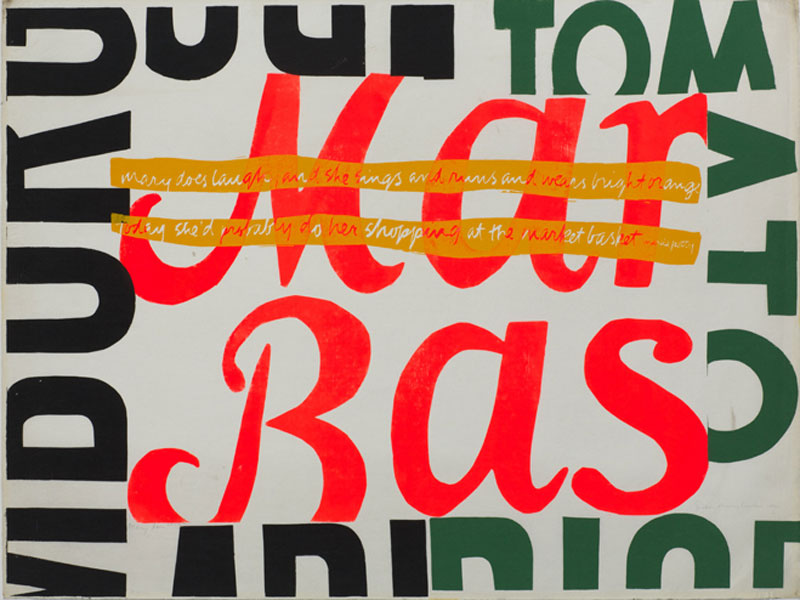
The Pasadena Museum of California Art is open Wednesday–Sunday 12–5 pm and every third Thursday from 5–8 pm (when admission is free). Admission is $7 for adults ($5 for seniors and students), and free for children 12 and under.
Pasadena Museum of California Art 490 East Union Street Pasadena, CA 91101
Corita Art Center
After exploring Kent’s work at the Pasadena Museum of California Art, we were intrigued and wanted to learn more about her deeply principled and daring life. So we visited the Corita Art Center in Hollywood, a modest gallery, gift shop, and archive dedicated to preserving and promoting Kent’s work and spirit.
The Center is located on the beautiful campus of Immaculate Heart High School and the American Film Institute (AFI), which was formerly the Immaculate Heart College where Kent taught. She was devoted to teaching, making her own artwork only during school vacations, and was by all accounts an iconoclastic and extremely creative instructor. In 1964 she became head of the art department and created a speaker series bringing to campus avant-garde lecturers like architect Buckminster Fuller and composer John Cage.
She was also known for seemingly outlandish class assignments, and former students recall being instructed to spend three hours drawing their own wrist again and again, or an overnight assignment to make two hundred drawings of a Coke bottle and present them in class the following day. But there was a rational and well-intentioned method to her assignments, which she eventually distilled down to her Ten Rules, designed to promote creativity.
Immaculate Heart College was established in 1916 by the Sisters of the Immaculate Heart of Mary. In the late 1960s, in response to changing times and directives from Vatican II, which addressed the relationship between the church and the modern world, the Sisters proposed changes to how they prayed, worked, lived together, and governed themselves. However, the Archbishop of Los Angeles at that time, Cardinal James Francis McIntyre, opposed the proposed changes, leading to a public spat during which he ordered the removal of all Immaculate Heart sisters teaching in Los Angeles diocesan schools. Finally he presented the sisters with an ultimatum: conform to the traditional standards of religious life or seek dispensation from their vows. In the end, 90% of the rebel nuns chose to dispense from their vows.
Amidst these turbulent times, Kent decided to leave the order and turn to art-making full time. She moved to Boston’s Back Bay, and remained active in social causes. The huge Boston Gas Tank on the Southeast Expressway still sports her rainbow design. She died on September 18, 1986.
The Corita Art Center is open Monday–Friday, 10 am–4 pm. Call to confirm your visit before stopping by. In addition to displaying works by Kent along the hallway walls—including many that are not exhibited at the PMCA—the Center sells her serigraphs. Kent’s former classrooms are up the hill from the Center, in buildings now operated by the AFI. Note that the Rite-Aid on the southwest corner of Franklin and Western was formerly the Market Basket grocery store where Kent and her students perused signage and packaging for inspiration, and the bright yellow, free-standing cleaners on the same lot was once her art studio.
Corita Art Center 5515 Franklin Avenue Los Angeles, CA 90028
Written by Stacey Ravel Abarbanel

